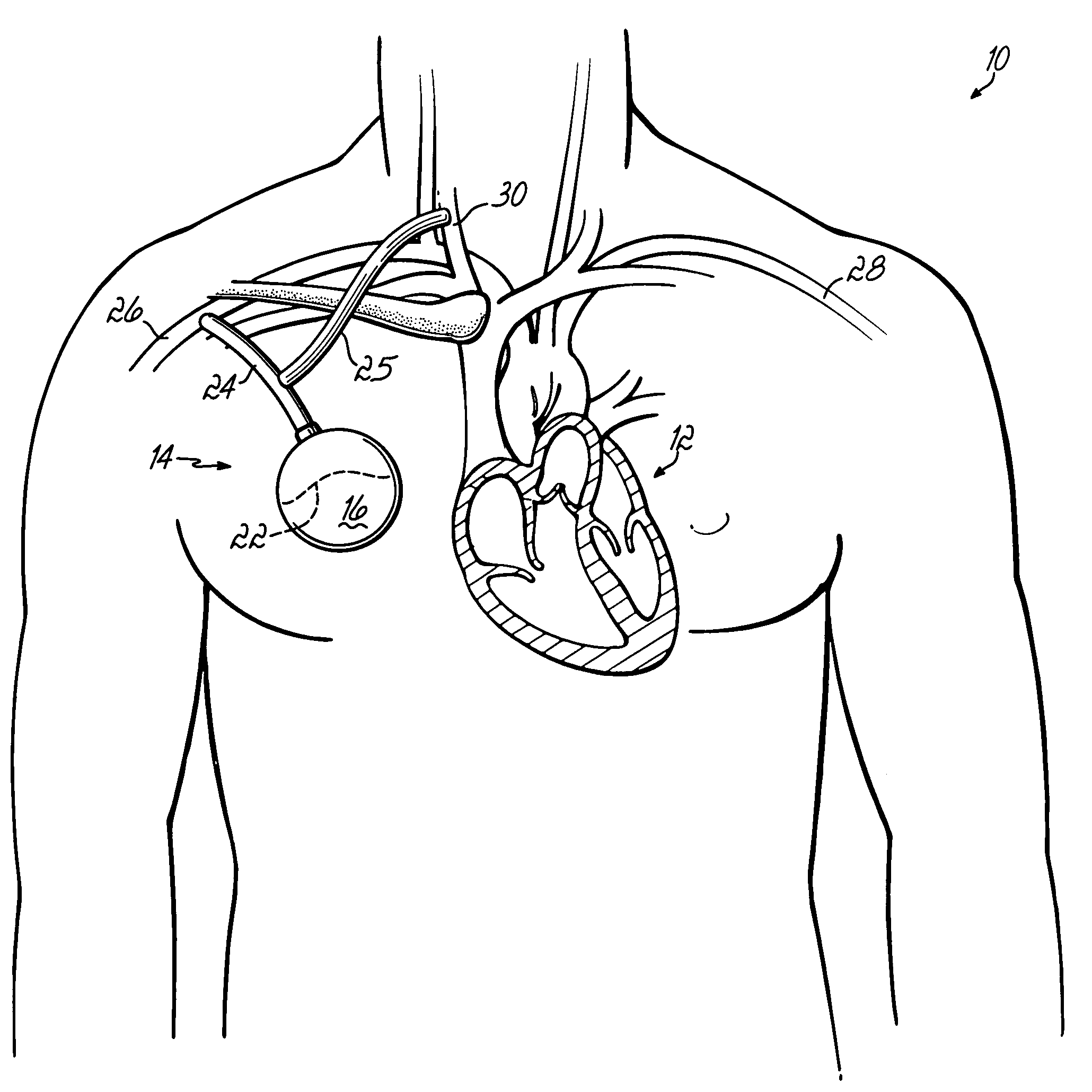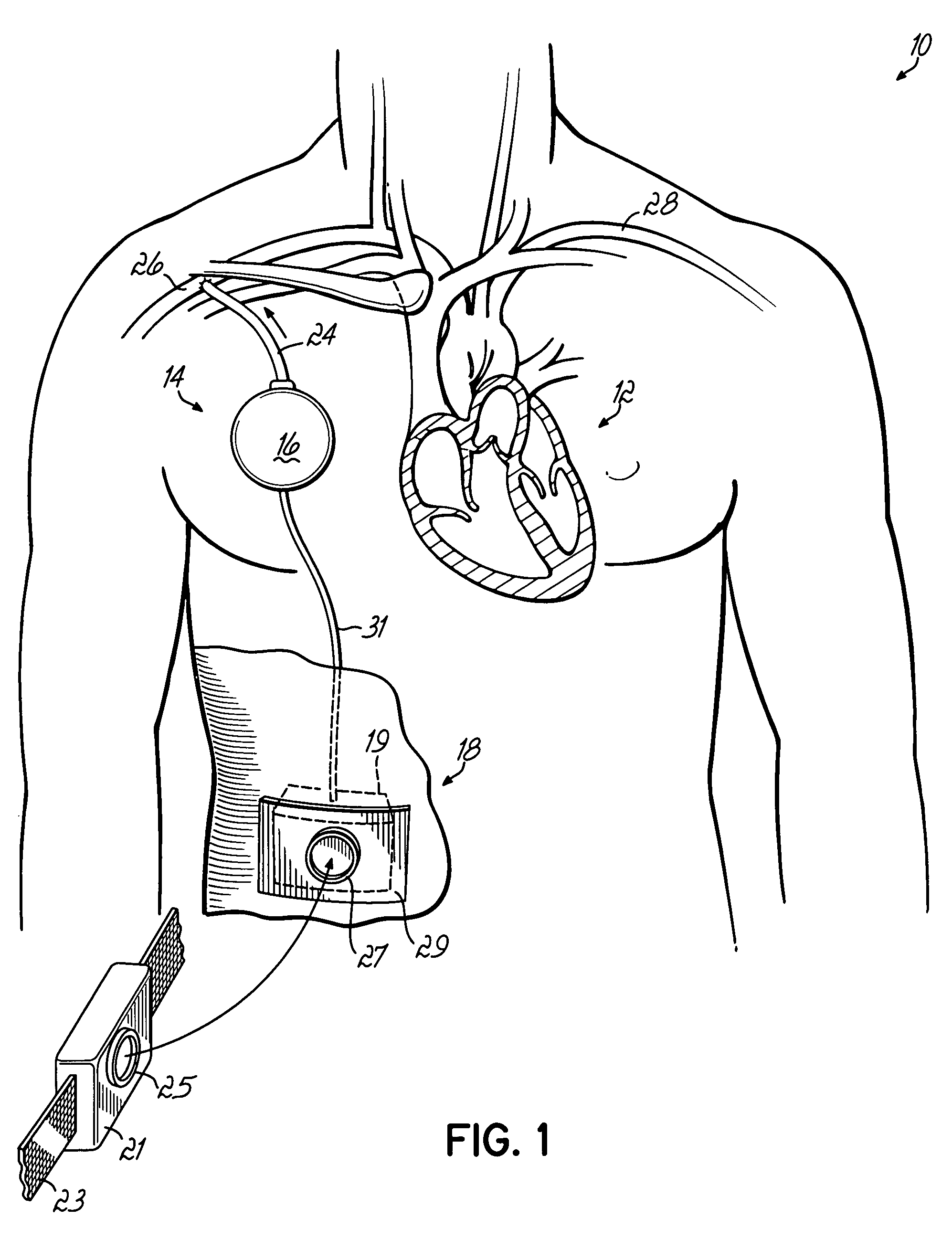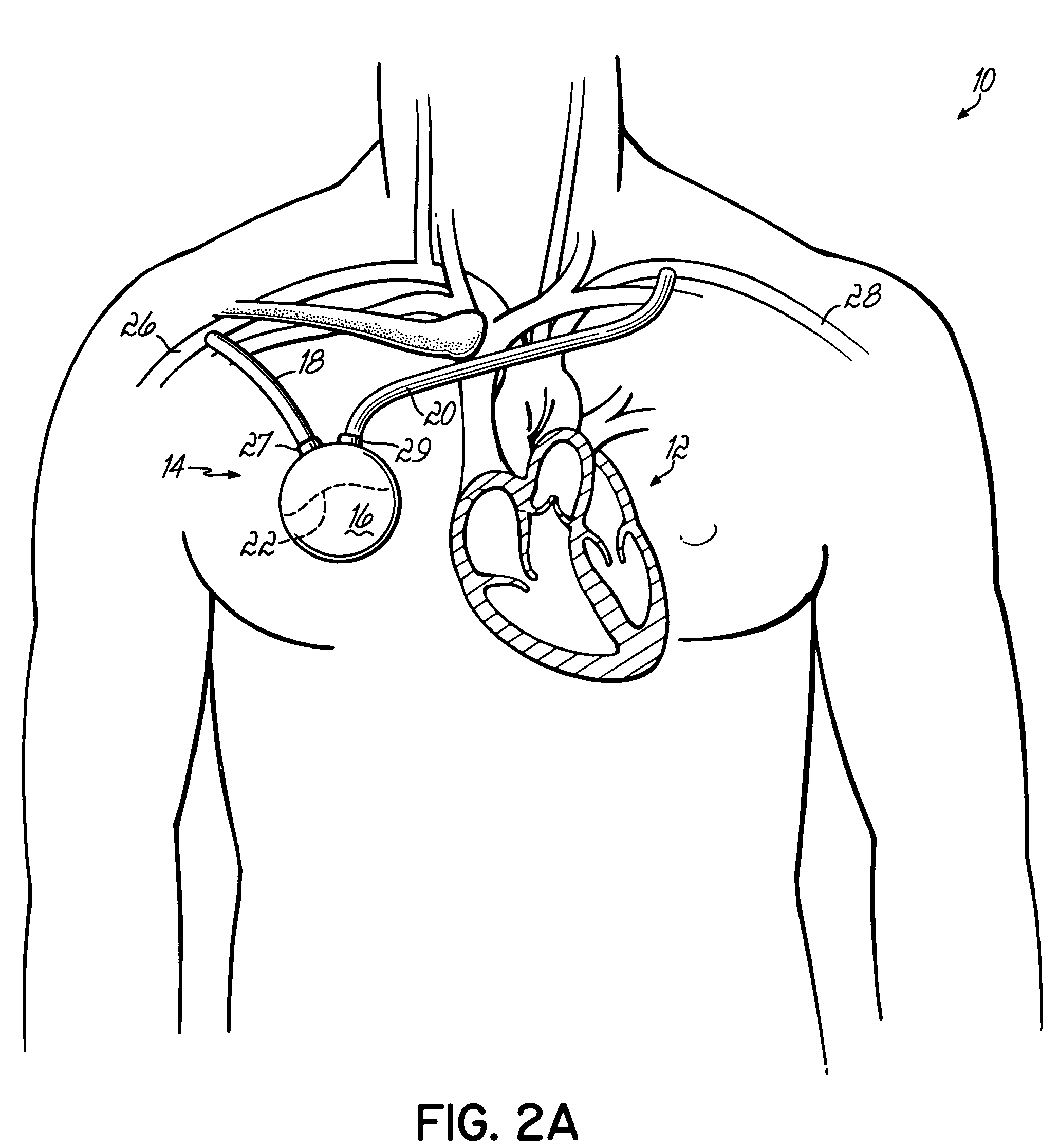Methods, devices and systems for counterpulsation of blood flow to and from the circulatory system
a technology of blood flow and counterpulsation, which is applied in the direction of blood pump, other medical devices, therapy, etc., can solve the problems of ineffective medication to improve the strength of heart contraction, little progress toward solving this problem on a mass scale, and congestive heart failure, so as to reduce blood clotting
- Summary
- Abstract
- Description
- Claims
- Application Information
AI Technical Summary
Benefits of technology
Problems solved by technology
Method used
Image
Examples
Embodiment Construction
[0038]In each of the systems described below, blood is removed from the patient's arterial blood system during systole and pumped back into the blood system during diastole. In the various figures, like reference numerals refer to like structure, while like reference numerals with prime marks (′) refer to corresponding elements that have been modified in manners that will be apparent or described.
[0039]FIG. 1 illustrates a patient 10 having a heart 12, shown in longitudinal cross section, coupled with a supplemental assist device or system 14. System 14 comprises a pulsatile pump device 16 which may be implanted in a small pocket made subcutaneously over the patient's chest, such as in the subclavicular region as shown in the drawing. This is a similar implantation procedure to conventional pacemakers. Pump 16 is coupled with a control. Power supply 18 may be an implanted power supply or a power supply partially or wholly external to the patient. One particularly desirable power sys...
PUM
 Login to View More
Login to View More Abstract
Description
Claims
Application Information
 Login to View More
Login to View More - R&D
- Intellectual Property
- Life Sciences
- Materials
- Tech Scout
- Unparalleled Data Quality
- Higher Quality Content
- 60% Fewer Hallucinations
Browse by: Latest US Patents, China's latest patents, Technical Efficacy Thesaurus, Application Domain, Technology Topic, Popular Technical Reports.
© 2025 PatSnap. All rights reserved.Legal|Privacy policy|Modern Slavery Act Transparency Statement|Sitemap|About US| Contact US: help@patsnap.com



